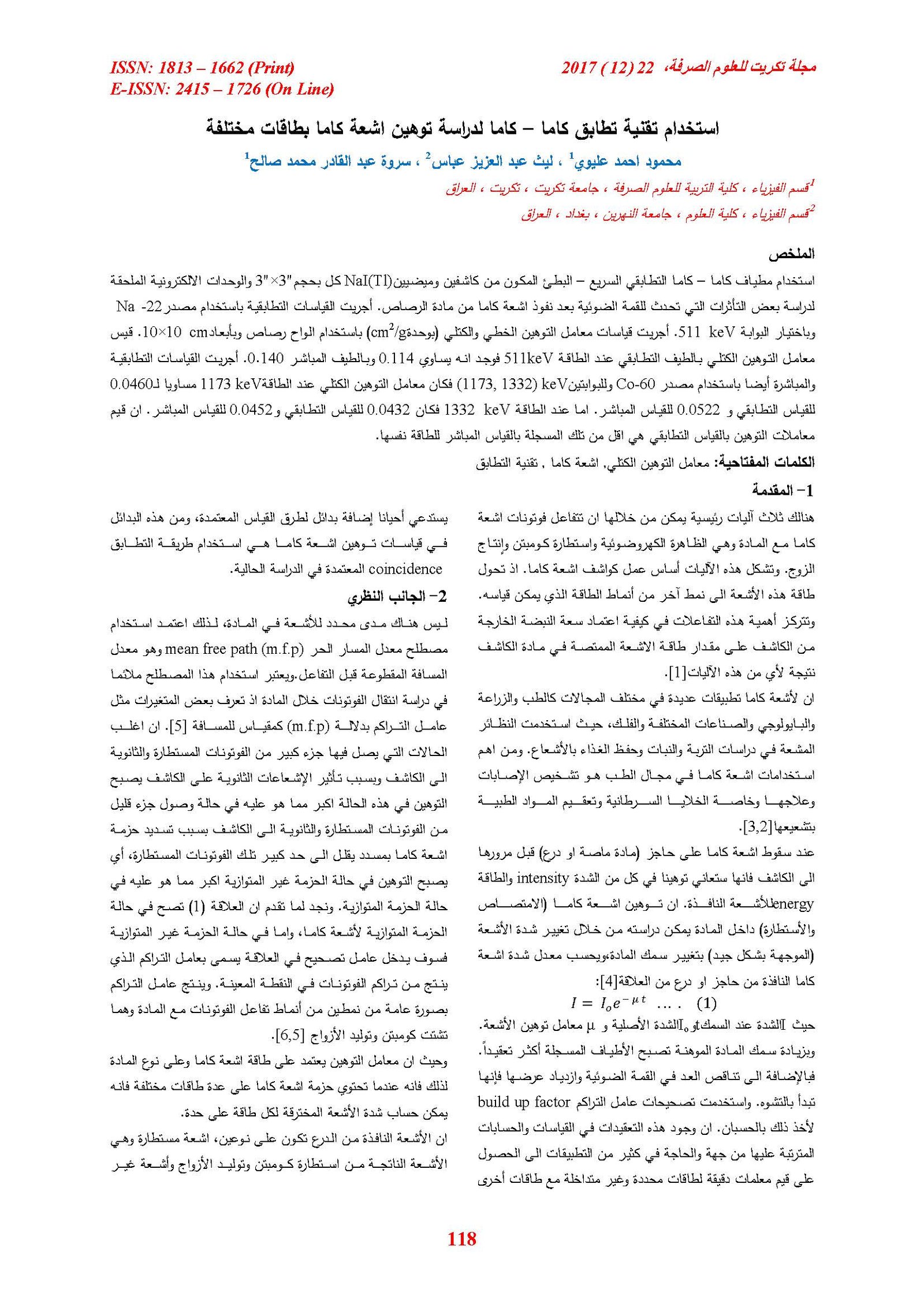USE OF GAMMA–GAMMA COINCIDENCE TECHNIQUE IN INVESTIGATING GAMMA – RAYS ATTENUATION AT DIFFERENT ENERGIES
Main Article Content
Abstract
A gamma–gamma fast –slow coincidence spectrometer composed of two 3"×3"NaI(Tl) detectors and peripheral electronics is used in investigating some effects on the photo peak after the penetration of gamma –rays from lead. Coincidence measurements are carried out using Na-22 source with selecting the 511 keV gate. Linear and mass attenuation (in cm²/g) coefficients measurements are made using lead sheets with dimensions 10×10 cm. Mass attenuation coefficient was measured for coincidence spectrum at 511 keV and found to be 0.114 and 0.140 for direct spectrum. Also coincidence and direct spectra measurements were carried out using Co-60 source with 1332 and 1173 keV gates. Mass attenuation coefficient at 1173 keV was 0.0460 for coincidence spectrum and 0.0522 for direct spectrum. At 1332 keV the same coefficient was0.0432 for coincidence spectrum and 0.0452 for direct spectrum. Mass attenuation coefficients values from coincidence measurement are lower than those in direct measurement at same energies
Article Details

This work is licensed under a Creative Commons Attribution 4.0 International License.
Tikrit Journal of Pure Science is licensed under the Creative Commons Attribution 4.0 International License, which allows users to copy, create extracts, abstracts, and new works from the article, alter and revise the article, and make commercial use of the article (including reuse and/or resale of the article by commercial entities), provided the user gives appropriate credit (with a link to the formal publication through the relevant DOI), provides a link to the license, indicates if changes were made, and the licensor is not represented as endorsing the use made of the work. The authors hold the copyright for their published work on the Tikrit J. Pure Sci. website, while Tikrit J. Pure Sci. is responsible for appreciate citation of their work, which is released under CC-BY-4.0, enabling the unrestricted use, distribution, and reproduction of an article in any medium, provided that the original work is properly cited.
References
1- G.F. Knoll," Radiation Detection and
Measurement", John Wiley and Sons, New York,
2000.
3. G.Foldiak (editor)," Industrial Applications of
Radioisotopes", Studies in Physical and Theoretical
Chemistry 39, Institute of isotopes of the Hungarian
Academy of Sciences, Budapest, Hungary, Elsevier,
1986.
4. V. Arena, "Ionizing Radiation and Life", The C.V.
Mosby CO. St. Louis, MO (1971).
6. N. Tsoulfanidis, " Measurement and Detection of
Radiation ", 2nd Edition , Braun-Brumfield, Inc U.D.,
(1995).
